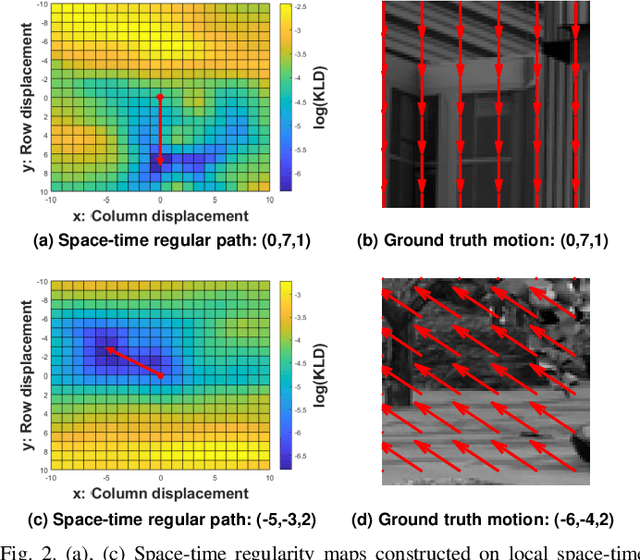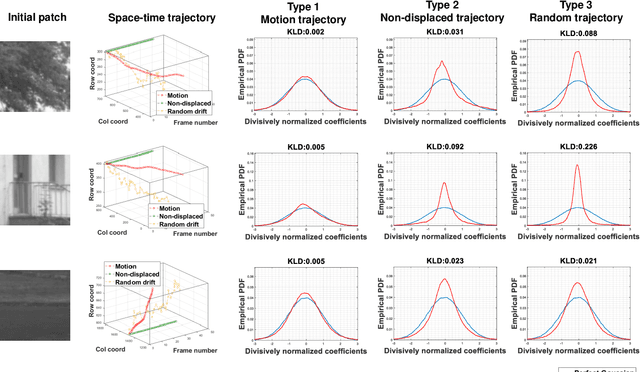Space-Time Video Regularity and Visual Fidelity: Compression, Resolution and Frame Rate Adaptation
Paper and Code
Mar 31, 2021



In order to be able to deliver today's voluminous amount of video contents through limited bandwidth channels in a perceptually optimal way, it is important to consider perceptual trade-offs of compression and space-time downsampling protocols. In this direction, we have studied and developed new models of natural video statistics (NVS), which are useful because high-quality videos contain statistical regularities that are disturbed by distortions. Specifically, we model the statistics of divisively normalized difference between neighboring frames that are relatively displaced. In an extensive empirical study, we found that those paths of space-time displaced frame differences that provide maximal regularity against our NVS model generally align best with motion trajectories. Motivated by this, we build a new video quality prediction engine that extracts NVS features from displaced frame differences, and combines them in a learned regressor that can accurately predict perceptual quality. As a stringent test of the new model, we apply it to the difficult problem of predicting the quality of videos subjected not only to compression, but also to downsampling in space and/or time. We show that the new quality model achieves state-of-the-art (SOTA) prediction performance compared on the new ETRI-LIVE Space-Time Subsampled Video Quality (STSVQ) database, which is dedicated to this problem. Downsampling protocols are of high interest to the streaming video industry, given rapid increases in frame resolutions and frame rates.
 Add to Chrome
Add to Chrome Add to Firefox
Add to Firefox Add to Edge
Add to Edge